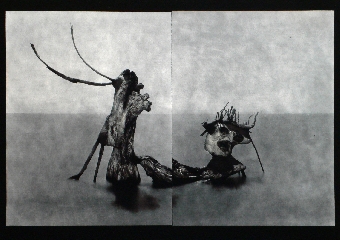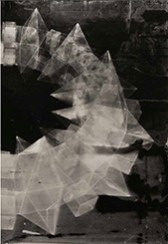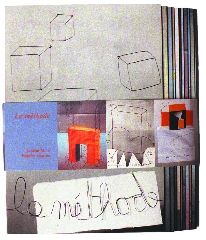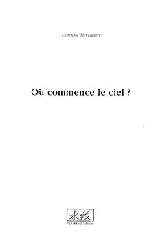This monograph is a collection of small buildings from crops poaching fun items without qualities, pieces of cardboard decorated with materials pétaradantes, son of rusty iron, and sometimes surfaces s’agrémentent paperwork, plans, diagrams hermetic supposed to inform their design. The horizon of a flat Wednesday and said the oil leak and thwarts a notion of perspective too ingrained in our plastic stereotypes. Laurent Millet reinvents in his compositions, the status of landscape or scenery or subject, but both simultaneously. Cultivating the art of calotype *, breaking up photography, using complex blends of negative practice is between staging and photos are not posed. Laurent Millet lived in landscapes where water, earth and the sky merge on the banks of the Gironde estuary where he made his territory.
* The calotype is a photographic process invented by William Henry Fox Talbot in 1841. It provides a direct negative paper and thus be able to reproduce positive images by simply drawing contact.
* The calotype is a photographic process invented by William Henry Fox Talbot in 1841. It provides a direct negative paper and thus be able to reproduce positive images by simply drawing contact.
This title is out of print and no longer available.
Laurent Millet né en 1968, se consacre à la photographie depuis le début des années 1990. Il vit dans des paysages où l’eau, la terre, le ciel se confondent, au bord de l’estuaire de la Gironde, dont il fait son territoire de travail.
Représenté à New York par Robert Mann Gallery, à Paris par Camera Obscura.
Il a publié en 2002 chez Filigranes La méthode un livre d’artiste sous forme de leporello 6 m de longueur.
Représenté à New York par Robert Mann Gallery, à Paris par Camera Obscura.
Il a publié en 2002 chez Filigranes La méthode un livre d’artiste sous forme de leporello 6 m de longueur.
François Seigneur né en 1942 dans l’Orne, diplômé de l’école Boulle en 1961, de l’École Nationale Supérieure des Arts Décoratifs en 1964. Depuis plus de 30 ans, il explore le champ de l’architecture, réactualisant ses problématiques et abolissant ses confins. Il s’engage dans cette voie sur les pas de Claude Parent, avec qui il collabore. De 1970 à 1972, il travaille avec Jean Nouvel puis avec Gilbert Lézénès.



